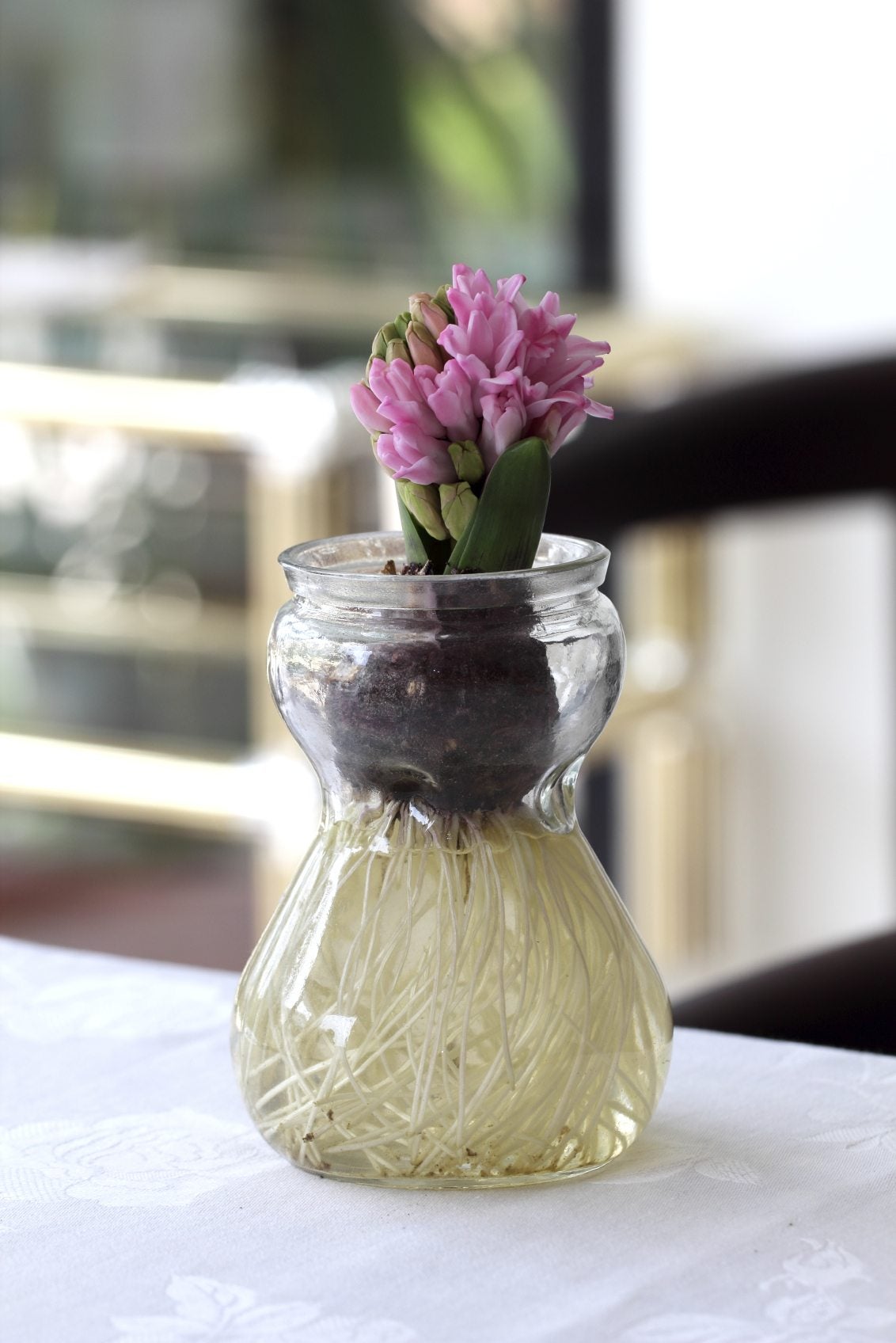What Is A Bulb Jar: Bulb Vase Info For Forcing Flowers


If you’re interested in forcing bulbs to bloom indoors, you’ve probably read about bulb-forcing jars. Unfortunately, available information doesn’t always provide much detail about bulb glasses for flowers and how bulb glass vases work. The idea of bulb-forcing jars may seem complicated, but it’s much simpler than you may think. Read on for some helpful bulb vase info.
What is a Bulb Jar?
Basically, bulb glass vases are simply that – glass containers for forcing bulbs. The size and shape of bulb-forcing jars depend primarily on the type of bulb you are attempting to force. Hyacinth – Glass containers for forcing hyacinth bulbs can be simple, but they are often attractive containers that accentuate the beauty of the hyacinth blooms. Some hyacinth containers are collector’s items. Jars manufactured specifically for forcing hyacinth bulbs usually have a round, squatty bottom, a narrow midsection, and a rounded top that nestles the hyacinth bulb just above the water. Some jars are taller with a more slender shape. Bulb-forcing jars for hyacinth don’t have to be elaborate or expensive. For example, you can make a simple hyacinth jar with a standard canning jar. Just fill the jar with enough marbles or pebbles to hold the bulb above the water. Paperwhites and crocus – Small bulbs, like paperwhites and crocus, are easy to grow without soil, and nearly any sturdy container will work, including bowls, vases, or canning jars. Just the fill bottom of the container with at least 4 inches (10 cm.) of pebbles, then arrange the bulbs on the pebbles so the base of the bulb is just above the water, close enough that the roots will contact the water. Tulips and daffodils – Larger bulbs, such as tulip and daffodil bulbs, are usually forced in wider, deeper containers that can accommodate three or four bulbs or more. Even a glass bowl is fine as long as it holds at least 4 inches (10 cm.) of marbles or pebbles. The pebbles support the bulbs and the base of the bulbs should be just above the water, near enough so the roots – but not the base of the bulbs – will contact the water.
Sign up for the Gardening Know How newsletter today and receive a free copy of our e-book "How to Grow Delicious Tomatoes".

A Credentialed Garden Writer, Mary H. Dyer was with Gardening Know How in the very beginning, publishing articles as early as 2007.